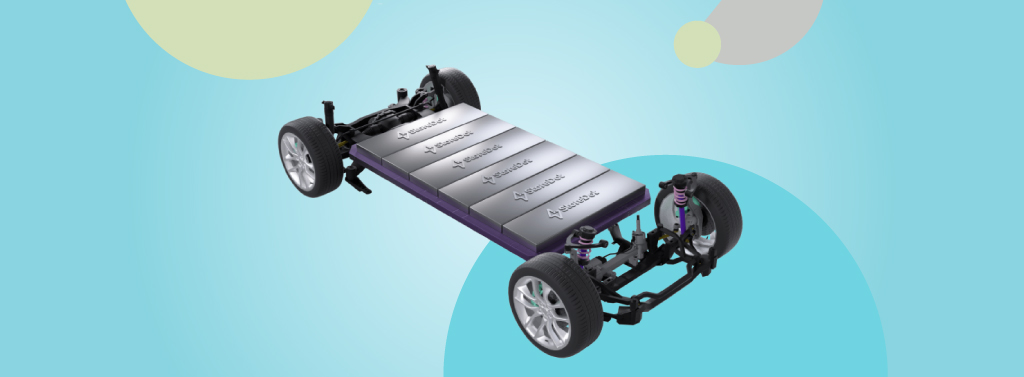As the calls for sustainability and greener transportation grow louder, electric vehicles (EVs) have emerged as a clear winner to address this barrier.
EVs accounted for around 18% of the total cars sold worldwide in 2023, against 2% in 2018.
Additionally, Leading EV manufacturers, including BYD, Tesla, Volkswagen, and BMW Group, have proactively responded to consumer demands, which has further bolstered consumer sentiment in recent years.
That said, there are a few looming challenges that need immediate attention, and one of them is the battery charging time. The wait time for consumers in an ICE vehicle is 2-5 minutes at maximum. In contrast, it can take around 30 minutes to 8 hours to charge an electric vehicle, depending on the battery size and power output.
As a result, many private companies are racing to roll out next-generation battery technologies that can handle higher charging speeds without damaging the battery.
In this article, we will touch upon one of the recent innovations by the pioneers of fast-charging EV batteries, Polestar and StoreDot.
Current State of Fast Charging EV Batteries
As mentioned earlier, one of the biggest challenges EV cars and battery manufacturers must tackle is the long recharge times of EV batteries. Despite EVs’ growing popularity, consumers seek the same degree of convenience they enjoy while refueling their traditional ICE vehicles.
In a McKinsey survey, around 42% of people said that they would only consider buying an EV if the public-charging infrastructure is at par with that of conventional gas stations.
Apart from the driving range, costs, and battery quality, charging speed is a key point consumers consider before switching to an EV. The current state of fast-charging EV batteries hinges on a few factors, including the battery size, charging infrastructure, and ongoing innovations and developments.
Lithium-ion batteries have taken center stage in the EV market in recent years, addressing two major hurdles:
- Long charging times
- Range anxiety
Conventional or the first few generations of EV batteries were not equipped to handle fast charging as it reduced the battery’s capacity.
While lithium-ion batteries remain popular, lithium-ion phosphate (LFP) batteries have gained immense attention, particularly after Ford Motor Company announced its plans to build a plant to manufacture these EV battery alternatives.
Further, investments in solid-state batteries are also moving in an upward trajectory as they have shown promising signs to improve driving range, and safety, and shorten charging times.
StoreDot and Polestar Ready to Revolutionize EV Battery-Changing Technology
One of the most well-known names in the EV sector, Polestar and StoreDot, are all set to disrupt the fast-charging EV batteries space with their latest innovation.
- The companies released a video showcasing how they successfully charged a 77kWh battery pack in a Polestar 5 prototype backed by StoreDot’s silicon-dominant battery cells from 0 to 80 percent in less than 10 minutes.
- The average charging rate was around 310 kW during the experiment, reaching a maximum rate of more than 370 kW.
- Needless to say, all the core cell monitors were under observation, including voltage, charged capacity, and temperature.
- Engineers from StoreDot and Polestar confirmed that none of the parameters exceeded the pre-set levels, reinforcing faith in StoreDot’s ‘drop-in’ EV battery-charging technology, which can be integrated into existing car models.
This recent experiment is likely to open up new avenues in fast-charging EV batteries, especially with the existing charging infrastructure. This was the first-ever demo in which a silicon-dominant battery of an EV finished charging in less than 10 minutes.
StoreDot’s Vision and Roadmap
The success of this demo can be attributed to the company’s cutting-edge extreme fast-charging (XFC) battery cells, which will also help catapult the sales of EV vehicles in the future.
The company is poised to produce and sell XFC cells that offer a 100-mile driving range with just a 5-minute charge. The vision is to deliver a 100-mile driving range in 4 minutes by the end of 2026 and in 3 minutes by 2028.
Read on to learn what makes these silicon-dominant batteries so special.
Are Silicon-based Batteries the Future of Fast-charging EV Batteries?
The Polestar and StoreDot event at the end of April this year is important in the EV space for many reasons. The demo is likely to minimize ‘range anxiety’ and shorten battery charging times by as much as 80%, both factors that will boost the adoption of EV vehicles in the future.
So, what makes these batteries so special, and why are they tipped to be the future of fast-charging EV batteries?
- One of the major benefits of silicon-dominant batteries is their ability to optimize the energy density and charging rate of the current and next-generation batteries.
- On the other hand, the scope for innovation in EV batteries with a conventional graphite anode is limited since they have reached their theoretical performance threshold.
Conclusion
It is clear that EV players must go above and beyond to ensure they cater to the evolving consumer sentiments. That said, the increasing sales of EVs in the last five to six years indicates that EV battery manufacturers are taking note of consumer demands and responding with better and improved services.
The recent Polestar and StoreDot event indicates that silicon-dominant batteries are likely to replace EV graphite anode batteries and pave the way for fast-charging EV batteries in the upcoming years.
